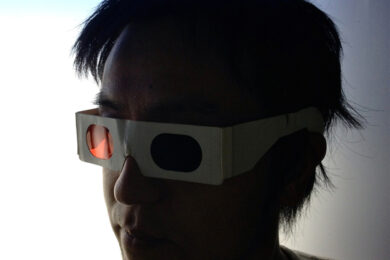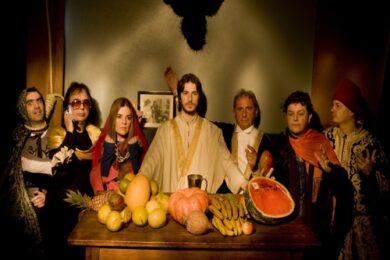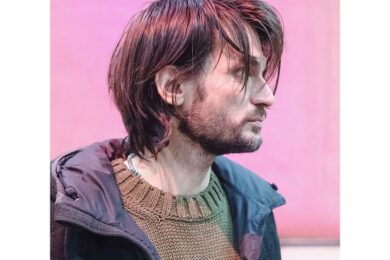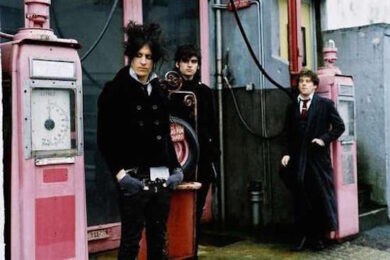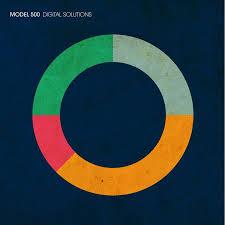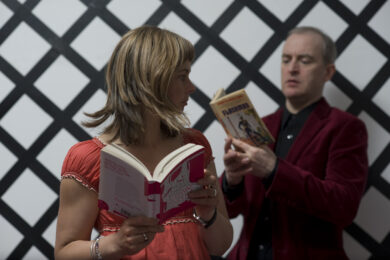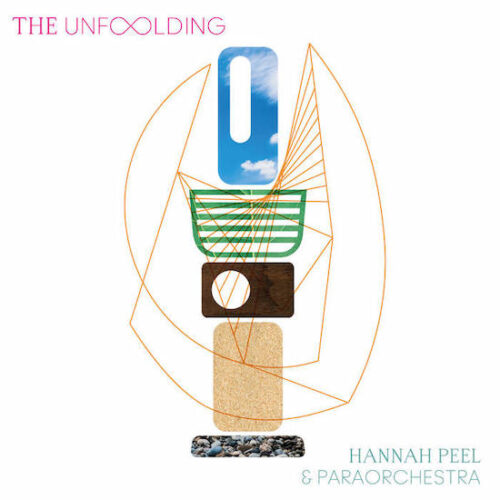We were very taken with French video production company AB/CD/CD’s interpretation of Factory Floor’s Optimo single, ‘Real Love’ (watch above), admiring the way they managed to set its chill, repetitive synthesisers alongside superbly warm visuals that still retain a strange sense of entrapment and perpetual motion. AB/CD/CD are Arnaud Boutin, Clement Dozier and Camille Dauteuille – we got in touch with them to find out more. You can find their website here. Can you tell us how you first heard about Factory Floor?
AB/CD/CD: A friend of Camille told him about them and then he bought the EP ‘Lying’ / ‘A Wooden Box’ on blast first. He brought it back to Paris and we all loved it..
What was it about their music that inspired you?
AB/CD/CD: Every time we do a video we try to be minimal. We try to find the core idea amongst the few ones we have and then develop it. If we had to describe Factory Floor’s music, we’d say that it’s all about the core. They seem to experience how close they can be to the core of the kind of music they are doing. It’s really interesting from a directorial perspective. As directors, we have to be fully aware of what we are doing and have to think about it first. Trying to think a video like Factory Floor do music is really interesting. Could we make a video that somehow reaches the core, on which we could get rid of anything useless (like a story for example)?
Factory Floor are, to me, a group who deal in geometry and shapes in a musical form. I think you really capture this in the video. How did you want to interpret their music when you started making the video?
AB/CD/CD: We had this idea of shooting loops before discovering Factory Floor, but as we said, their perspective on loops in their music is really interesting. There is something definitely obsessive – trying to reach the core by achieving perfection (the perfect loop that you could listen to forever). It became our leitmotiv, trying to shoot actions that you could watch in loop for a very long time… And we wanted the project to be all about that at first: no specific story, no specific idea on art direction, etc. It had to be all about the loop, its meaning, its rhythm, its shape.
How did you make the connection between Michael Haneke’s 71 Fragments of a Chronology of Chance and Factory Floor? What did you feel the relationship was?
AB/CD/CD: Mickael Haneke is talking about obsession, so it was quite obvious. And there is this fantastic sequence where he shows the main character’s obsession, in showing him playing ping pong against a machine that is throwing balls at him exactly in the same way, for three minutes. It looks like nothing at first, and then the idea of obsession grows as you watch the sequence. Somehow in an anecdotic scene, he managed to make the obsession the main information. Nobody cares he is playing ping-pong, it’s all about the obsession, the tension. This was our starting point.
Then we had a few other problems to solve. An interesting one is how to end all this. M.H. makes his character kill people… We didn’t want to tell a story. We didn’t want to develop characters. We wanted it to be as much as possible just about loops. And the biggest problem with loops is that they are supposed to have no beginning and no end: ‘When does it break? When should we stop? What if we don’t stop?’. So we had to think about ‘entertainment’ and about the audience: how long can they stay in front of their computer staring at loops? What can make them stay as long as possible? It couldn’t be too long. It had to be fun to watch.


